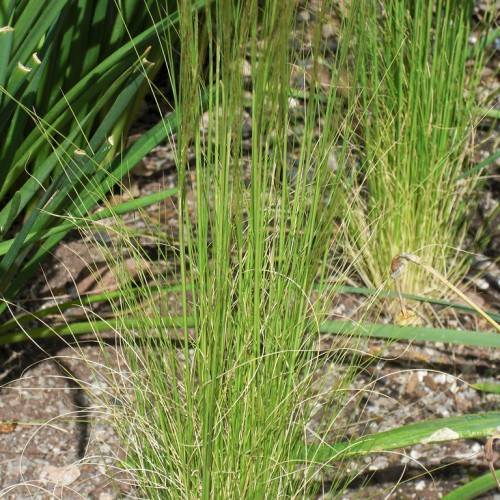
narrow feather grass
Nassella tenuissima ( syn. Stipa )
Also Known As - Mexican feather grass,angel hair grassCycle:
Herbaceous Perennial
Watering:
Average
Hardiness Zone:
8
Flowers:
Flowers In Spring
Sun:
full sun,sheltered
Soil:
Humus rich, Well-drained
Fruits:
Fruits In Summer Ready In Summer
Edible:
Yes
Leaf:
Yes
Growth Rate:
High
Maintenance:
Low
Drought Tolerant:
Yes
Salt Tolerant:
Yes
Tropical:
Yes
Care Level:
Medium
watering
Watering for a banana plant (Musa sp.) should depend on the amount of light and heat the plant is exposed to and the type of soil it is planted in. Generally, during its active growing season (spring to fall), banana plants need to be watered 1-2 times per week, with each watering session delivering enough water to thoroughly moisten the soil. Ensure that there is no standing water leftover after watering, as the banana plant can become overly water stressed due to root rot. During the plants dormant season (winter), it should be watered much less frequently, about once every 2 weeks or so, depending on the soil and climate.
sunlight
Bananas require a lot of sunlight and thrive in sunny, warm environments. In optimal conditions, banana plants need 8-10 hours of sunlight per day. In cold climates, banana plants may need to be brought indoors to maintain a favorable temperature.
pruning
Banana plants should be pruned at least once a year, preferably during the winter season when the plant is dormant. Pruning should be done to remove dead and diseased leaves, stems, and suckers, as well as any fruits that have already been produced. In addition, any sprouting plants should be pruned back to the soil line to prevent overcrowding. The amount of pruning should be kept to a minimum, as too much pruning may negatively affect the banana plant’s health and growth. If the plant is becoming overcrowded and more vigorous pruning is needed, it is best to remove the larger and more mature leaves first to encourage more vigorous growth in the plants.
